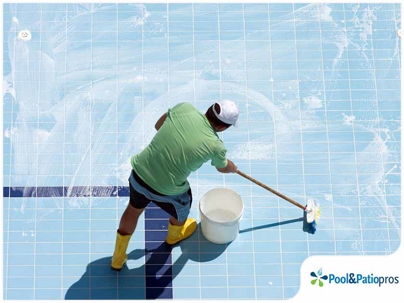In the first installment of this two-part blog series, we discussed the different types of algae and where they are usually found in pools. In this, the second and last part of the series, we will discuss how to remove and prevent them.
The fact of the matter is, that it’s impossible to completely prevent algae from forming in your pool. The wind, rain, and dirt around your pool can bring algae spores. Spores can even hitch a ride on the bodies of people who use the pool as well as on their bathing suits.
However, there are ways to minimize the formation of algae in any pool. Here are some suggestions.
Keep Your Pool’s Circulation System Clean and Healthy
A healthy circulation system is important in keeping your pool free of algae growth. That means you should be vigilant about pool cleaning and maintenance. Clean the pump strainer baskets and the skimmer of your circulation system. You should also backwash or clean your filter now and then. You can buy a specialized cleaning aid, such as spray and rinse cleaners, sand filter revitalizers, and cartridge filter degreasers.
Prevent Algal Blooms With Sanitizers
Chlorine and other sanitizing agents can kill algae spores before they grow into blooms. However, as soon as the sanitizer level gets too low, algae spores can rapidly grow and cling onto surfaces, from your pool to your pool decking. To combat this, invest in a floating or automatic chlorinator. Shocking your pool every week can also get rid of most algae spores and keep the correct sanitizer levels.
Brush Your Pool
Find out which pool brush is best for your pool to prevent damage. Pool builders and manufacturers typically recommend specific cleaning brushes. You can prevent algae growth by brushing your pool at least once a week.
Use an Algaecide
Regular use of an algaecide can keep algae from developing into blooms. Read the Algaecide’s label for tips on how often you can use it.
Keep Proper pH Levels
A pH level between 7.4 and 7.6 is ideal for your pool. This might not stop algae growth, but it makes chlorine and other sanitizers more effective at keeping algae at bay.
If you haven’t already, read the first part of this blog to learn about the different types of pool algae and where they often thrive.
Need help in keeping your pool algae-free? Get in touch with Pool and Patio Pros. We offer professional pool services.

